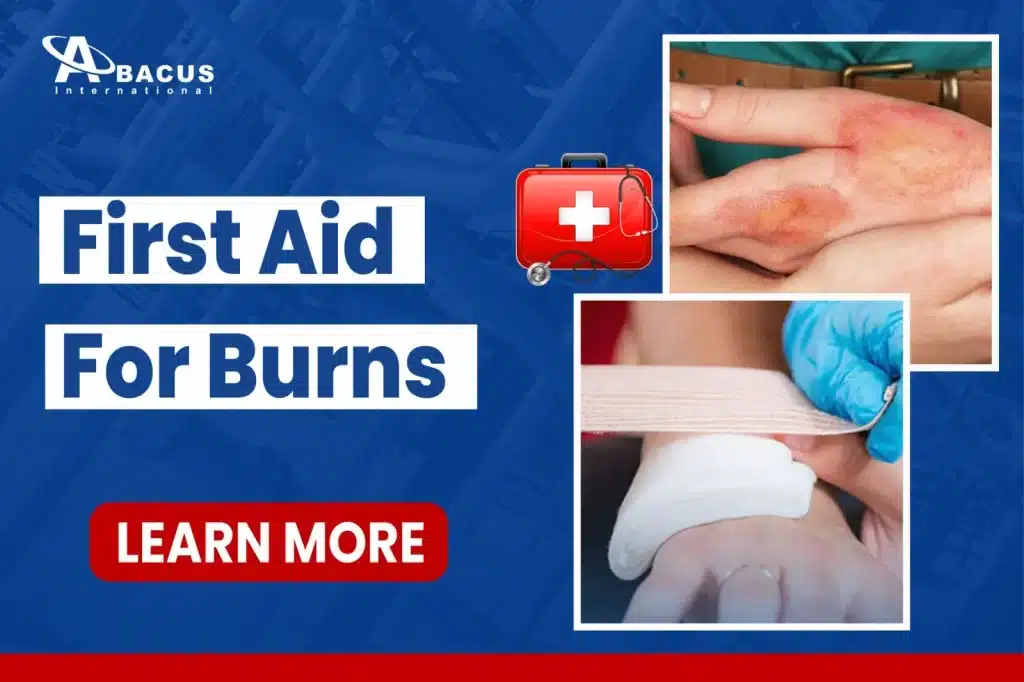A burn is an injury to the skin caused by heat, chemicals, electricity, or radiation. The severity of burns varies depending on how deep and large the affected area is.
Burns are common injuries that can happen in everyday life. Whether it’s a small burn from touching a hot pan or a severe burn from a fire, knowing the right first aid steps can make a huge difference. In this article, we’ll explore the best ways to treat burns and prevent further damage.
Why First Aid for Burns is Important
- Reduces pain and discomfort
- Prevents infection and further skin damage
- Helps in faster healing and minimizes scarring
- Can be lifesaving in severe cases
First Aid Treatment for Burns
Burns are categorized into three main types based on their severity:
1. First-Degree Burns (Superficial Burns)
- Affects only the outer layer of skin (epidermis)
- Symptoms: Redness, mild swelling, pain, dryness
- Healing Time: 3–7 days
- Example: Sunburn
First Aid for First-Degree Burns
- Cool the Burn – Run cool (not ice-cold) water over the burn for 10-15 minutes.
- Moisturize – Apply aloe vera or an unscented moisturizer.
- Pain Relief – Use over-the-counter pain relievers like ibuprofen.
2. Second-Degree Burns (Partial-Thickness Burns)
- Damages both the outer and underlying layers of skin
- Symptoms: Blisters, severe pain, swelling, moist appearance
- Healing Time: 2–3 weeks (possible scarring)
- Example: Scalds from hot liquids
First Aid for Second-Degree Burns
- Cool the Burn Immediately
- Do Not Pop Blisters
- Cover with a Non-Sticky Bandage
- Keep the Area Elevated
- Monitor for Infection (pus, increased redness)
3. Third-Degree Burns (Full-Thickness Burns)
- Destroys all skin layers, may affect muscles, bones, and nerves
- Symptoms: White, charred, or leathery skin; numbness due to nerve damage
- Healing Time: Requires medical treatment, skin grafting may be needed
- Example: Electrical burns, severe fire burns
First Aid for Third-Degree Burns
- Call Emergency Services Immediately
- Do Not Apply Water – This can worsen tissue damage.
- Cover with a Loose, Sterile Cloth
- Elevate the Burned Area
- Do Not Remove Stuck Clothing
What Not to Do for Burns
- Do not apply ice – Can worsen the injury.
- Do not use butter or toothpaste – Can trap heat and cause infections.
- Do not peel off burnt skin – Increases infection risk.
When to Seek Medical Attention
- Burns covering a large area
- Burns on face, hands, feet, genitals, or major joints
- Third-degree burns
- Electrical or chemical burns
- Signs of infection (pus, fever)
Long-Term Burn Care and Recovery
- Keep the area clean to prevent infection.
- Use moisturizing lotion to prevent dryness.
- Consult a doctor for severe scarring.
Burn Prevention Tips
Household Safety Measures
- Keep hot items out of children’s reach.
- Set water heaters to a safe temperature.
Kitchen Safety
- Use oven mitts.
- Turn pot handles inward.
Fire Safety Precautions
- Install smoke detectors.
- Keep a fire extinguisher at home.
Workplace Burn Prevention
- Wear protective gear.
- Follow safety protocols.
Frequently Asked Questions (FAQs)
1. How long do burns take to heal?
- First-degree: 3-7 days
- Second-degree: 2-3 weeks
- Third-degree: Requires medical intervention
2. How do I know if a burn needs medical attention?
Seek medical help for large, deep, or infected burns and for burns on the face, hands, or sensitive areas.
3. What home remedies can help with burn pain?
Aloe vera, honey, and cool compresses can help relieve pain and promote healing.


